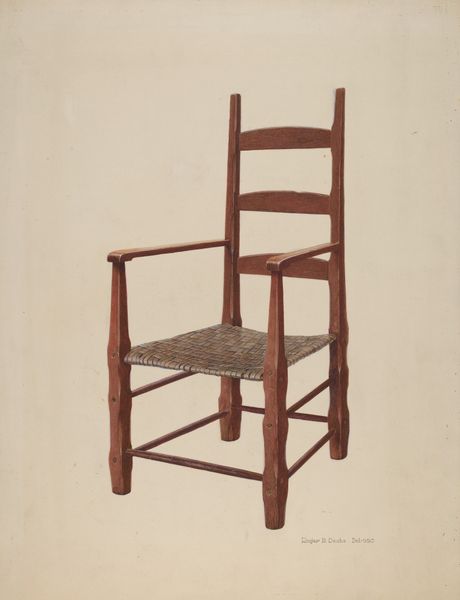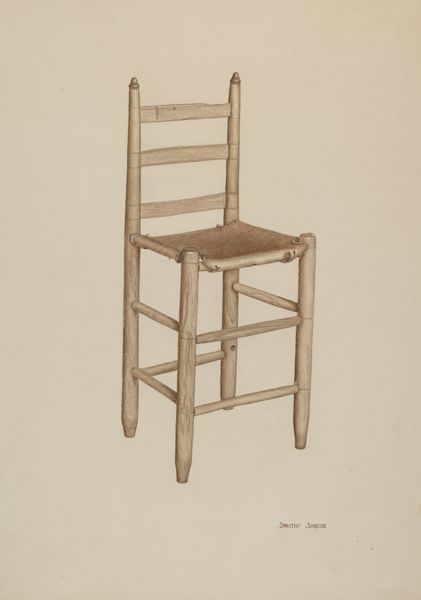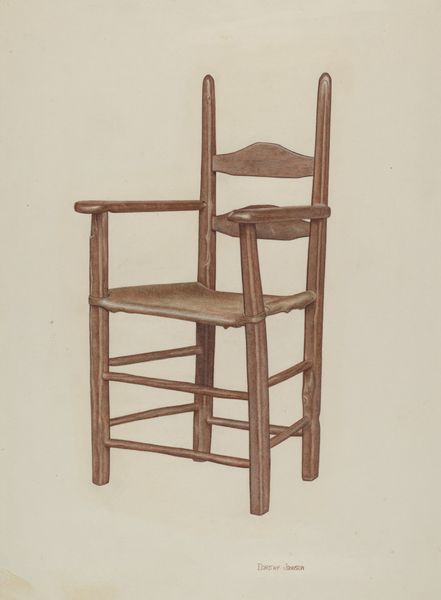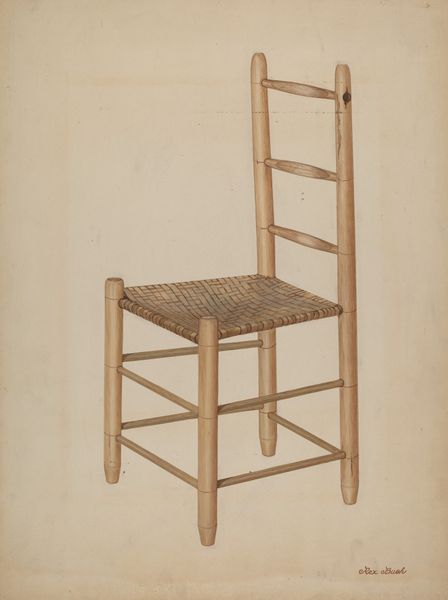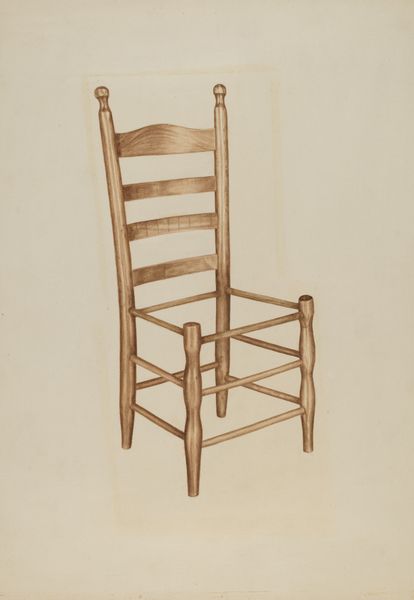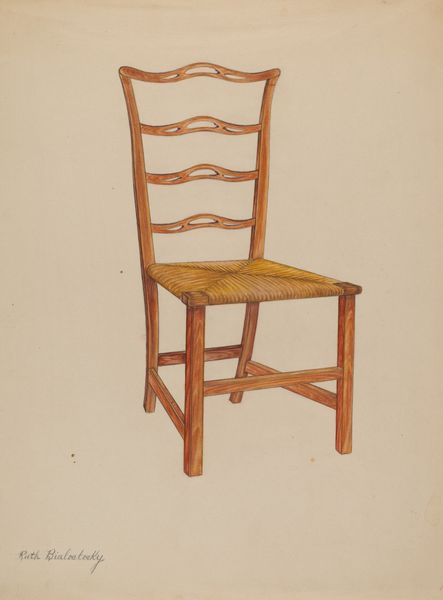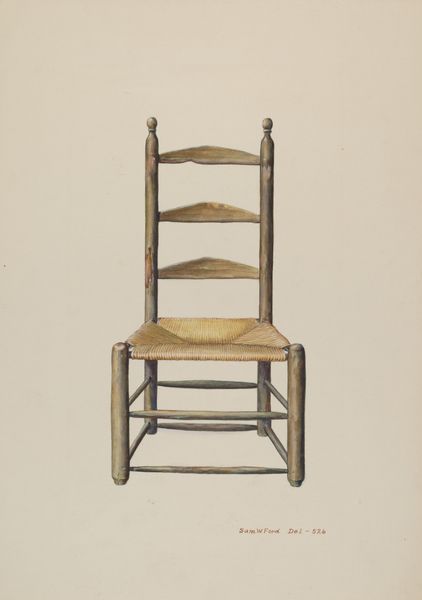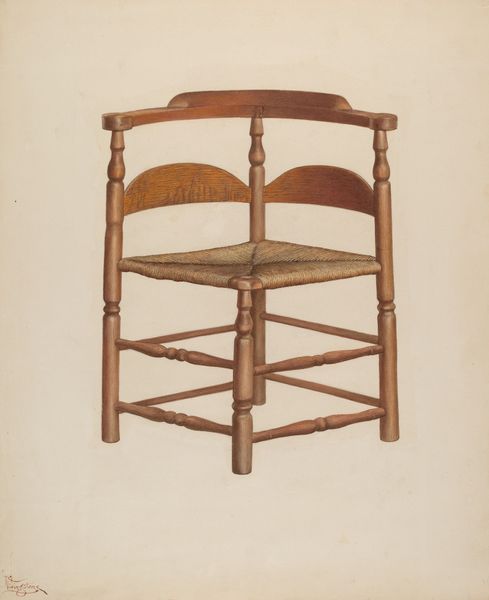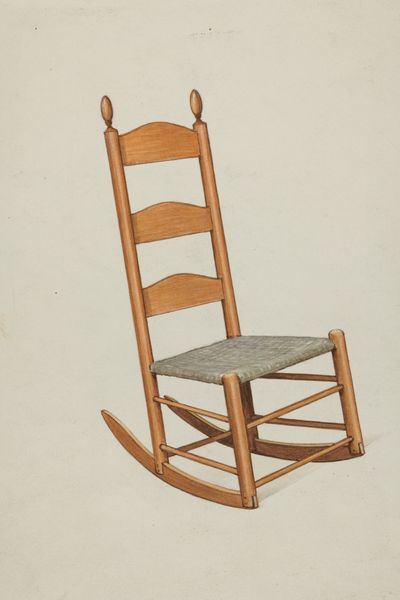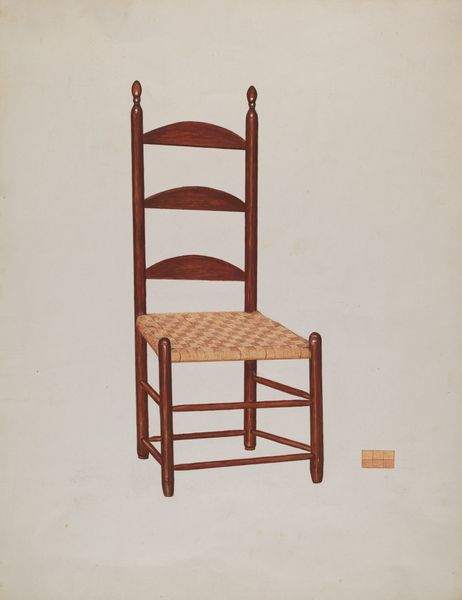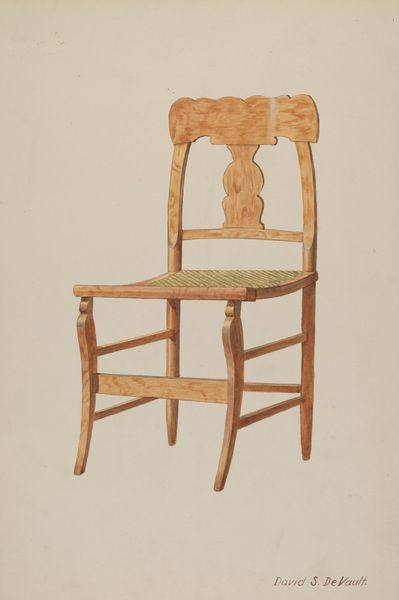
drawing, paper, pencil
#
drawing
#
paper
#
pencil drawing
#
pencil
#
modernism
Dimensions: overall: 25.7 x 16.9 cm (10 1/8 x 6 5/8 in.) Original IAD Object: 44 1/2" high
Copyright: National Gallery of Art: CC0 1.0
Curator: Looking at this pencil drawing from around 1937, we see a "Shaker Side Chair" depicted by Ray Holden. There’s a deceptive simplicity to it. Editor: My initial impression is one of serene austerity. The chair is presented with such clean lines, almost a minimalist portrait of functionality. You can practically feel the smooth, unvarnished wood and woven seat. Curator: Exactly. The Shakers, of course, were all about utility and honesty. Their aesthetic became a form of visual prayer, rejecting ornamentation for purity. This drawing really captures that essence, doesn’t it? But I find this artwork speaks to how Shaker designs influenced Modernism. The style echoed Shaker principles of utility, plainness, and functional design that later appealed to artists, designers and social critics of early 20th Century. Editor: Definitely, but also, I'm struck by how the artist has focused so intensely on the materiality of the chair. The pencil strokes give a sense of the grain in the wood, and the woven seat is rendered with enough texture that I can almost feel it. I'm immediately considering how this chair would have been produced: the labor involved, the access to materials... it feels more than just a functional object; it’s a document of a specific material culture. It emphasizes the artistic merits of everyday craft, and a time where functionality was prioritized alongside minimalist designs. Curator: And the drawing itself becomes part of that material culture! Think about it—pencil and paper memorializing a crafted object. It raises questions about value, doesn’t it? Is the chair art? Is the drawing a record? It certainly highlights how social values are literally embodied in material form. How labor practices or access to resources might shift, but how we consume them stays relatively stable. Editor: Precisely. I walk away thinking about not only its beauty and stark composition but about the labor that went into constructing this object and into its visual representation, and the social implications of these aesthetic choices. Curator: For me, it's about considering how something like a simple chair can tell a much bigger story about culture, about spiritual values, and, yes, about material production as well. It is far more complicated than meets the eye.
Comments
No comments
Be the first to comment and join the conversation on the ultimate creative platform.
